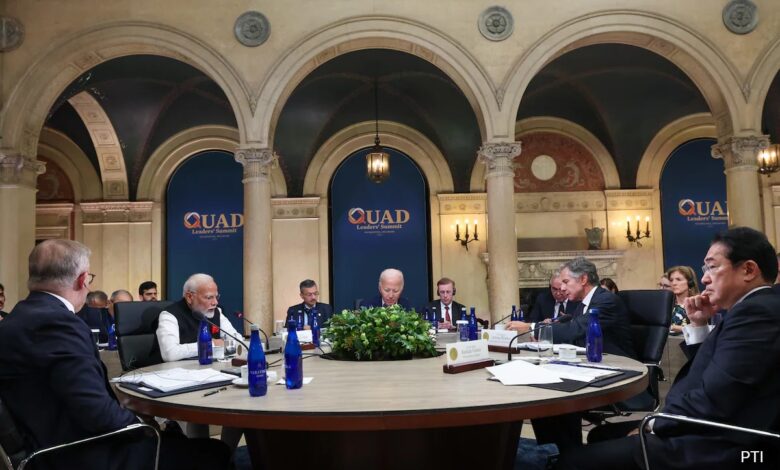
The idea of the Quad is now almost two decades old, emerging for the first time after the tsunami in 2004. Yet, a tone of tentativeness seems to surround this diplomatic partnership, often reflected in experts and media questioning its worth, need, or even existence.
The fourth Quad leaders’ summit in Wilmington, Delaware, was no different. Ahead of the summit’s start, a reporter asked US President Joe Biden if the Quad would exist beyond November. He quipped, “Much beyond that”, and then reiterated the sentiment in his opening statement at the summit. “Challenges will come, the world will change, but the Quad is here to stay.” He was backed by Prime Minister Narendra Modi of India, who added that the Quad was here to assist, partner, and complement the efforts of Indo-Pacific countries.
The Impact Of AUKUS
In 2021, just a week before the first in-person Quad summit in Washington, D.C., the U.S. announced a new trilateral security partnership – AUKUS – with an objective similar to that of the Quad: promoting a free and open Indo-Pacific region. The announcement of AUKUS, with its clear military aspect, immediately raised questions about the Quad, a partnership without any military component.
The re-emergence of the Quad in 2017, after lying dormant for more than a decade, was tempered by some hesitation from India and Australia. India, a neighbour of China, and Australia, with its trade dependence on China, were wary of antagonising Beijing by appearing to participate in what Chinese President Xi Jinping called a ‘U.S.-led Western effort’ to contain, encircle, and suppress China.
However, 2020 changed the stance of both New Delhi and Canberra. India became locked in border friction with China in Eastern Ladakh, and Australia faced a trade backlash from China as it pushed for a resolution to identify the origin of COVID-19.
That year saw India advocating for the second and stand-alone ministerial meeting of the Quad in Tokyo, despite the ongoing pandemic. The first ministerial meeting took place in New York on the sidelines of the United Nations General Assembly (UNGA). It was clear that inhibitions had been shed and the Quad was finally coming into its own.
Where Quad Has Really Proved Relevant
However, since the firming up of AUKUS – the security partnership between Australia, the UK, and the U.S. – comparisons are often drawn to the Quad and its possible ineffectiveness in containing China in the Indo-Pacific due to its lack of military muscle. Nevertheless, the Quad has positioned itself as relevant in another area: reducing China’s influence in the global economic space.
This year, the Quad Summit announced the Supply Chains Contingency Network to enhance the resilience of semiconductor supply chains. This is a critical area as semiconductors play a vital role in today’s world, particularly in advanced economies. A 2023 report by the research institute RAND stated that Taiwan’s dominance in global semiconductor production creates geopolitical and economic vulnerabilities for the US and its allies, as well as for Taiwan, which provides China with a potential asymmetric advantage. The report pointed out that a supply chain disruption could severely impact the U.S. economy and recommended that instead of acting unilaterally, Washington should engage its allies and partners to respond as a united, multinational bloc.
Another example is from 2021: the Quad vaccine partnership. As many as 400 million COVID-19 vaccine doses were delivered to Indo-Pacific countries to curtail China’s vaccine outreach and influence in Southeast Asian nations. A consultancy that tracks China’s impact on global health, Bridge Consulting, reported that China’s vaccine deliveries in the Asia-Pacific category totalled 890 million by December 2022.
Quad Is More Useful For US. Clue: India
Moreover, while AUKUS is a completely global Western alliance, India’s presence in the Quad makes it more useful for America. This can be better understood through John Ikenberry’s framework of Three Worlds: the West, East, and South, and the competition to shape the global order. He states that the main axis of the struggle over world order runs between the global West and the global East (China and Russia). Ikenberry describes the global South as a “swing grouping”, available to join other states in ways that tilt world politics in one direction or the other. It is this role that India fulfils and leverages through its participation in the Quad.
Hence, both the Quad as a partnership and India’s presence in such partnerships are expected to continue in a world where the rise of China remains a source of fragmentation in the current liberal or American world order.
(Maha Siddiqui is a journalist who has extensively reported on public policy and global affairs.)
Disclaimer: These are the personal opinions of the author




